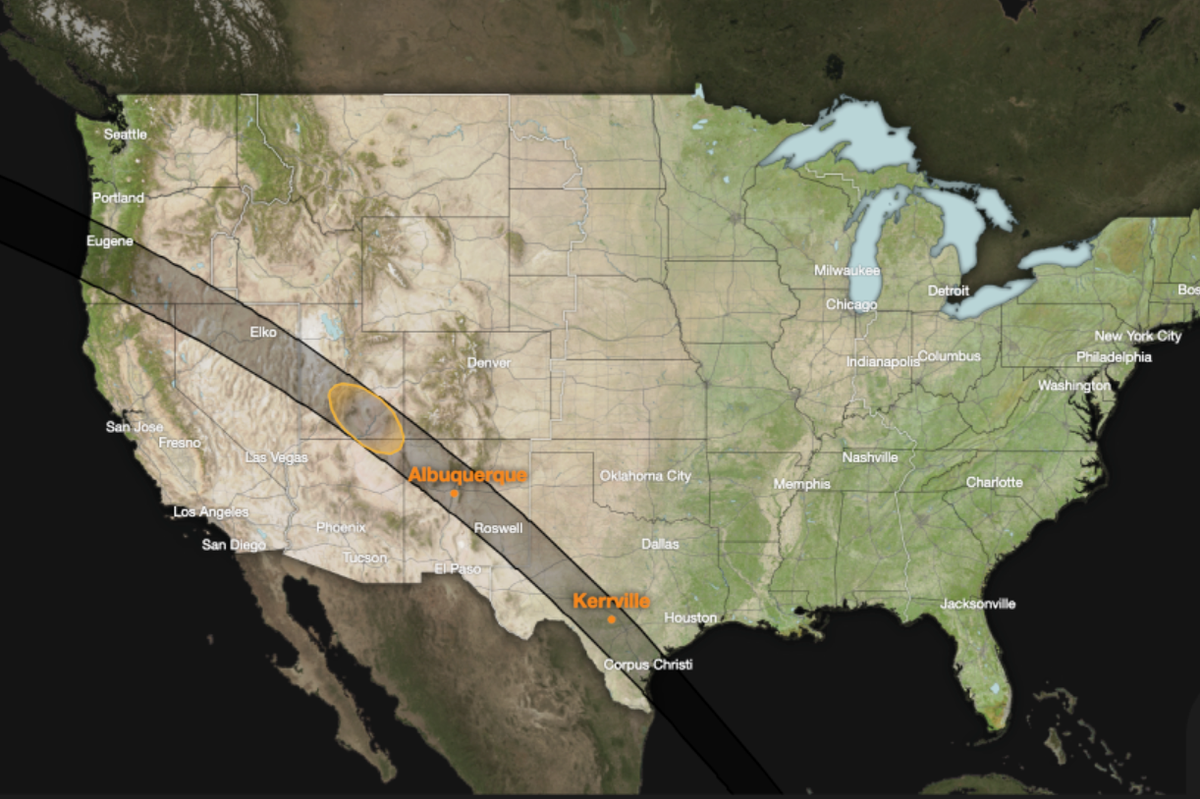‘Ring of fire’ solar eclipse this month will be last until 2046
A rare annular solar eclipse will pass over North, Central and South America this month, offering skygazers the last chance to view one for more than 20 years.
On 14 October, the Moon will pass in front of the Sun while at its furthest point from Earth, meaning it will not completely cover our star. This will create an effect that astronomers have dubbed a “ring of fire”.
The 2023 celestial event will be visible across eight US states, passing from Oregon in the north west to Texas in the south east, starting at 9.13am PT and ending at 12.03pm CT.
After passing over the Gulf of Mexico, the eclipse will then cross Mexico, Belize, Honduras, Panama, Colombia and Brazil.
People on the ground will first see a partial eclipse as the Moon moves in front of the Sun. After about an hour and 20 minutes, the annularity will occur, lasting between one and five minutes.
Nasa has created an interactive map to track the annular solar eclipse’s progress, which will allow followers to see where the eclipse is to the nearest second.
The US space agency advises anyone viewing the annular solar eclipse to wear specialised eye protection designed for looking at the Sun, as the Moon will not completely block out the light.

“During the eclipse, the sky will grow dimmer, though not as dark as during a total solar eclipse. Some animals may begin to behave as if it is dusk and the air may feel cooler,” Nasa notes on its website.
“Do not look at the Sun through a camera lens, telescope, binoculars, or any other optical device while wearing eclipse glasses or using a handheld solar viewer – the concentrated solar rays will burn through the filter and cause serious eye injury.”
People in neighbouring countries and states will be able to see a partial solar eclipse, though they will not experience the “ring of fire” effect.
The next annular solar eclipse crossing the US will take place in 2046, according to Nasa’s eclipse program manager Kelly Korreck, however a total solar eclipse will be visible from North America on 8 April, 2024.
